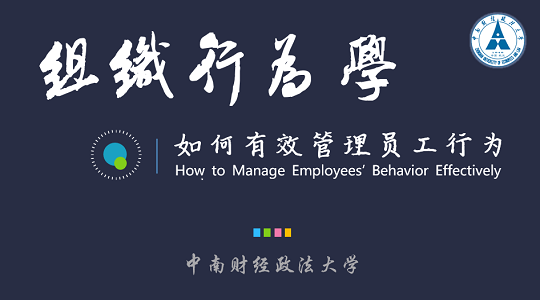
当前课程知识点:Entrepreneurial Land Redevelopment Approach: Land Readjustment > Module 1: Introduction to Land Readjustment > Course Structure > Course Structure
返回《Entrepreneurial Land Redevelopment Approach: Land Readjustment》慕课在线视频课程列表
返回《Entrepreneurial Land Redevelopment Approach: Land Readjustment》慕课在线视频列表
我们先来预习一下
接下来的模块中要讨论的问题
在模块2中
我们将从11个发展中国家的
土地整备项目案例中展现研究结果
我们把重点放在发展中国家的原因是
这一地区的土地整备
具有可操作性和经验性
却并没有得到足够的重视
虽然已经有
3本介绍发达国家土地整备经验的英文书籍
以及大量的期刊文章
但最近的实验信息表明
发展中国家和新兴经济体的土地工具
并没有得到广泛普及
工业化程度较低的国家比工业化国家
更迫切需要创造性
和实际性的想法
来解决与快速城市化相关的问题
因此 我们将详细研究
土地整备的关键性操作问题
其中包括两个经常被忽视的部分
那就是达成共识和鼓励参与决策
基于这些例子 我们认为
如果管理问题还没有解决
那么土地整备便无法产生理想的结果
在模块3中 我们将重新审视
介绍模块中提到的可获得性政策目标
我们将展示在何种程度下
上述提到的一些政策目标
能够在各种实例中获得实现
更为重要的是
在采取土地整备之前
我们将用这些例子来揭示
传统智慧中的某些必要先决条件
在模块4中 我们将提出一些有关设计
和实施土地整备的标准化步骤
重要的是 在一开始就要强调
制定并实施土地整备
并没有统一的程序
本模块中提出的标准化步骤
只是建议性框架 目的是帮助从业者
在根据当地环境
进行土地整备时
确定重要的及相关的问题
在讨论了土地整备如何实施
在何处实施以及实施的条件后
我们将在模块5中
对前几个模块的概念及经验信息进行反思
从先前的概念和经验讨论中
得出实际的经验教训
和政策启示
我们将为你总结关键点
以便将来有一天让你可能成为发展中国家的
土地政策决策者和实践者
-Welcome
--Welcome
-Course Welcome
-How to Use This Course
-Who's Teaching This Course
-Learning Objectives
-Course Schedule
-Grading and Completion Criteria
--Grading and Completion Criteria
-Introduction
-Defining Land Readjustment
--A Working Definition of Land Readjustment
--Introduction to Land Readjustment
-- Challenges of Rapid Urbanization in Developing Countries
--Challenges of Rapid Urbanization
--html
-Questions
-Conventional Approaches to Solving Problems of Rapid Urbanization
--Conventional Land Assembly Apporach
--Questions
--html
-Land Readjustment as an Alternative
--Land Readjustment as an Alternative
--Land Readjustment as an Alternative
--Questions
--html
-Course Structure
--html
-Discussion and Application
--html
--Application Activity
--html
-Introduction
--Introduction to Land Readjustment
--html
-The Evolution of Land Readjustment
--The Early Development Stages of Land Readjustment
--html
--The Diversity of Land Readjustment
--Diversity of Land Readjustment
--html
--Questions
-Land Readjustment Examples
--html
--Text
--Turkey
--html
--html
--Text
--Six Lessons of Conducting Land Readjustment in the Fenicia Project in Bogotá, Colombia
--html
--Post-conflict and Post-disaster Reconstruction
--Angola
--html
--html
--Chile
--Questions
--html
-Wrap Up
--Lessons from Global Examples
--Question
--html
--html
--Key Concept Review 2--General observations
--Questions
--html
-Discussion and Application
--Module 2: International Experiences with Land Readjustment
--html
--Application Activity
--html
-Introduction
--html
-Conceptualizing Land Readjustment Goals
--Conceptualizing Land Readjustment Goals
--Policy Goals of Land Readjustment
--html
--Questions
-Myths About Adopting Land Readjustment
--Myth #1: The Need for Land Readjustment Legislation
--Myth #1
--html
--Example: Informal Settlement Upgrading in Ethiopia
--html
--Myth #2: Clearly Delineated Property Rights
--Myth #2
--html
--Example: Urban Village Redevelopment in China
--Text
--Myth #3: The Existence of a Buoyant Real Estate Market
--Myth #3
--Text
--Myth #4: An Organized Community
--Myth #4
--html
--Myth #5: Trust Relations Among Stakeholders
--Myth #5
--html
--Questions
--html
-Preconditions for Adopting Land Readjustment
--html
-Wrap Up
--html
-Discussion and Application
--html
--Application Activity
--html
-Introduction
-Important Considerations
--html
-Context Assessment
--Assessing Each Component of the Larger Environment
--html
-Initiation and Preparation
--html
--Preparation and Organization
--html
-Design and Approval
--Design
--Calculation of Land Contribution Ratios
--Calculation of Land Contribution Ratios
--Text
--Approval
--html
-Implementation and Completion
--Implementation and Completion
--Text
--html
-Evaluation and Scaling Up
--html
-Wrap Up
--html
-Discussion and Application
--html
--Application Activity
--html
-Main Takeaways
--Takeaways of the Entire Course
--Takeaways of The Entire Course
--html
--Text
--html
-Application Activity
--Application Activity
-Evaluation
-Acknowledgements






